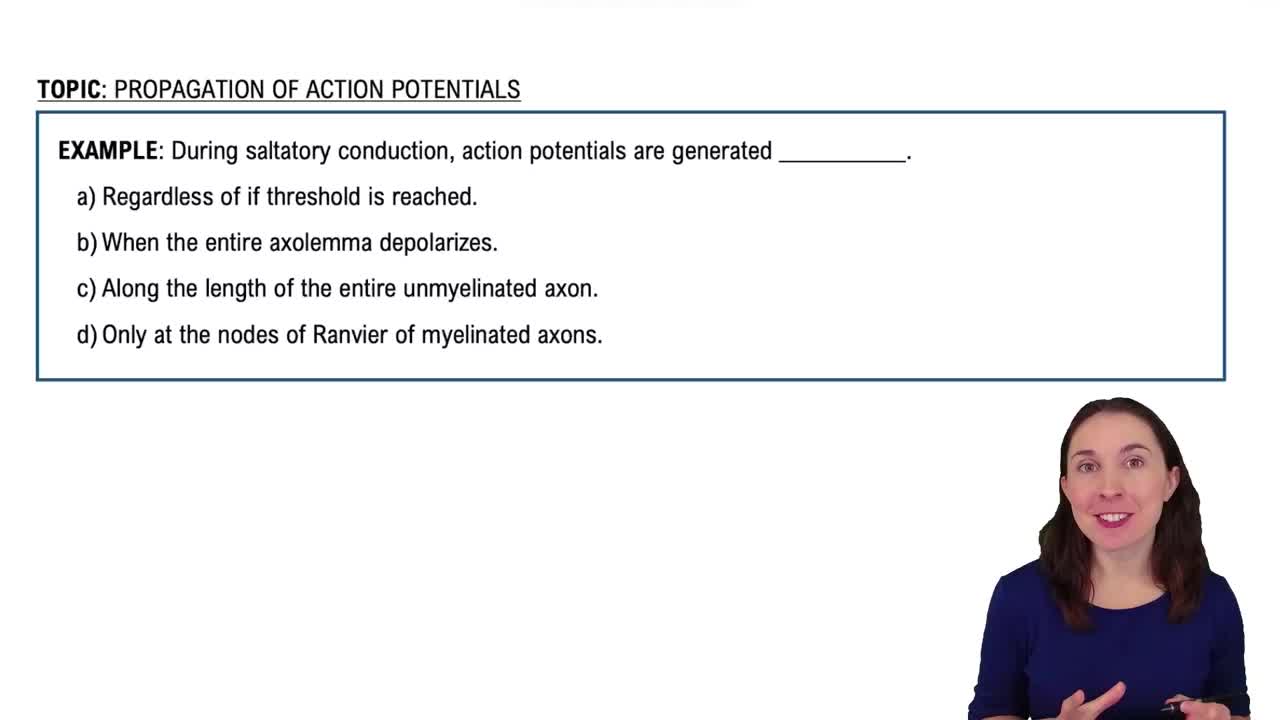Here are the essential concepts you must grasp in order to answer the question correctly.
Myelination
Myelination is the process by which certain types of glial cells wrap around nerve fibers to form a protective and insulating layer called myelin. This myelin sheath enhances the speed and efficiency of electrical signal transmission along the axon. In the central nervous system (CNS), oligodendrocytes are responsible for myelination, while in the peripheral nervous system (PNS), Schwann cells perform this function.
Recommended video:
Propagation of Action Potentials Example 1
Glial Cells
Glial cells, or neuroglia, are non-neuronal cells in the nervous system that provide support, protection, and nourishment to neurons. They play various roles, including maintaining homeostasis, forming myelin, and participating in immune responses. Key types of glial cells include astrocytes, oligodendrocytes, microglial cells, and ependymal cells, each with specific functions that contribute to overall brain health and function.
Recommended video:
CNS vs. PNS
The central nervous system (CNS) consists of the brain and spinal cord, while the peripheral nervous system (PNS) includes all the nerves outside the CNS. The two systems have different types of supporting cells; for instance, oligodendrocytes myelinate axons in the CNS, whereas Schwann cells perform this role in the PNS. Understanding these distinctions is crucial for identifying the functions of various supporting cells in the nervous system.
Recommended video:
 Verified step by step guidance
Verified step by step guidance


